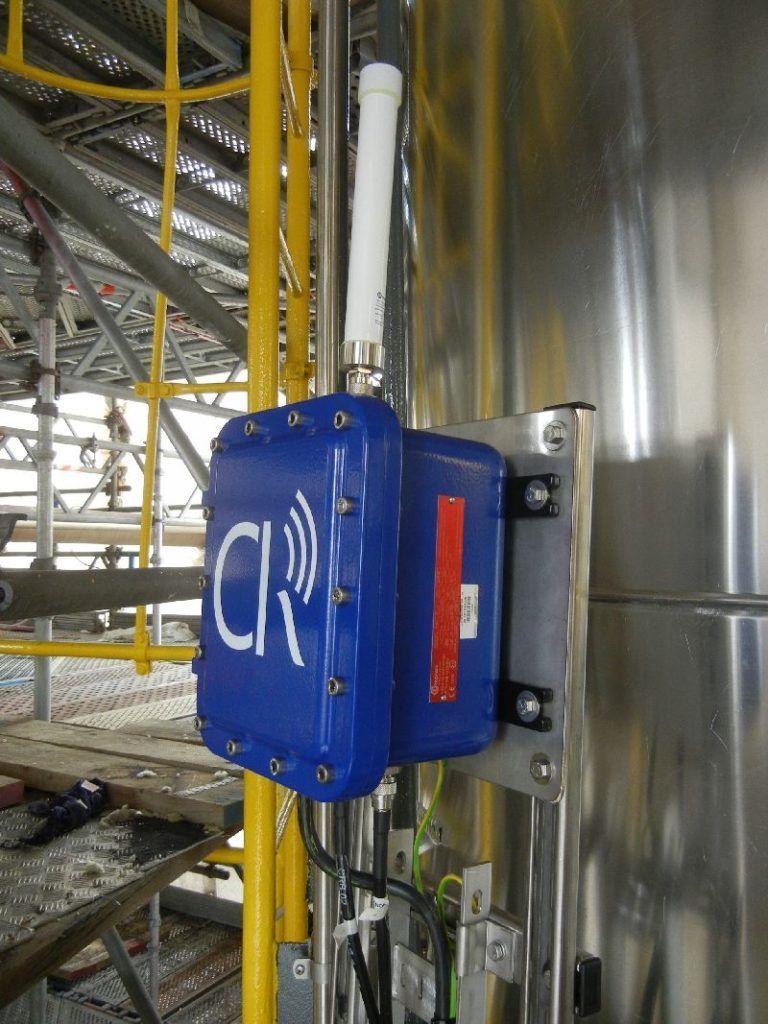
Sensor project tackles billion-pound challenge of hidden corrosion
- This project was featured in The Press and Journal and other specialist trade publications in 2018
CENSIS and university spin-out company Corrosion Radar are joining forces to tackle a huge challenge for the oil & gas, nuclear, renewables, and construction sectors: how to detect corrosion that’s hidden under insulation.
In the oil and gas industry alone, the cost of monitoring Corrosion Under Insulation (CUI) in assets such as pipelines, is estimated at around £3.5bn annually. Current practice relies on periodic removal of insulation in selected areas to check visually for corrosion. This project will explore the use of remote sensors to monitor corrosion continually without the need to physically remove insulation. Funding for the £98k project includes a £69k grant from Innovate UK, under its recent Innovation in UK Infrastructure Systems funding round.
Financial, safety and environmental benefits
The project could also open the way for a predictive maintenance regime, based on IoT infrastructure and cloud-based data analytics to help operators prevent the failure of assets as a result of corrosion. Operational failures can lead to downtime and lost revenues for operator and, at worst, they can be catastrophic in health and safety and environmental terms.
With distributed sensors and predictive monitoring capabilities, operators in these industries would also be better positioned to extend the life of their assets.
Dr Chiraz Ennaceur, CEO of Corrosion Radar said “Tackling CUI in the oil and gas industry is the first application we foresee for this technology. In the downstream segment alone, there are more than 700 crude oil refineries with over two million pipelines – and 25%-30% of these are prone to CUI. So the need for better monitoring technology is huge.”
“And oil and gas is not the only application. From the nuclear industry, where pipes are enclosed in concrete, to renewables to construction, there’s a need for better ways to manage CUI. This project could help to put the UK at the leading edge of this global issue.”
Chemical company Solvay is already trialling a Corrosion Radar’s distributed sensor system on its plant.
Alvaro Martinez Lopez, Corporate Excellence Manufacturing Engineer, commented: “Across a range of industries, the better data made possible by sensors and IoT should allow operators to make informed decisions around corrosion, and the fitness for purpose and safety of assets.”
CENSIS will help Corrosion Radar to integrate its corrosion and moisture sensors with IoT infrastructure, including long-life, battery-powered wireless data logging using industry protocols such as LPWAN, and cloud-based analytics. This will enable data from the sensors to be delivered cost-effectively to end-users as actionable information – even from areas that are currently off-grid in terms of power provision and connectedness.
The 12-month project will carry out a technical feasibility study for IoT enablement of the sensors, feeding directly into IoT infrastructure design and product development. With this place, the door is opened for the future work to design a predictive maintenance model.
There would also be potential for UK manufacturing and technology providers around the knowledge developed.
Dr Rachael Wakefield, CENSIS Business Development Manager, noted: “This project is specifically around tackling corrosion, but it relates to a wider change – digital enablement and the use of IoT and sensor systems to make our infrastructure smarter.
“Intelligent sensing capability, combined with low power, low cost and secure wireless infrastructure, has immense potential for improving the safety and resilience of our infrastructure, reducing maintenance costs, and increasing operational efficiency – and this goes far beyond managing corrosion. CENSIS is working with companies in different sectors to realise the UK’s potential in this field.”